How To Attribute Creative Commons On Blog Post
A Guide to Creative Commons Images for Blogs
![]()
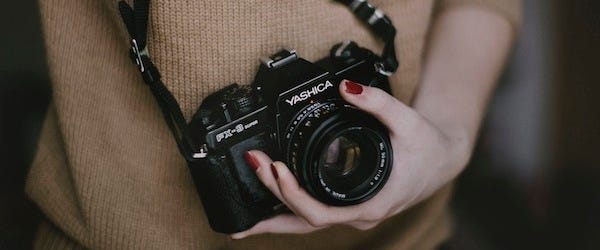
A good blogger knows the value of a good image. Visuals make the blog post more engaging, more interesting and more shareable. We should all be loading up blogs with relevant, high-quality imagery.
Easier said than done.
One of the most difficult parts of any blog work is finding images to accompany each post. There's a huge misconception that the web is this giant online repository of images that you can use at will. What people don't understand is that images can only be used with proper attribution, and even then only if they fall under Creative Commons licensing.
T o help you save time in finding great blog images, we break down the ins and outs of Creative Commons below.
What is Creative Commons?
Many people don't know that Creative Commons is actually a non-profit organization, not just a classification. In the interest of helping people make their original works publicly available, the organization created a series of "free, easy-to-use copyright licenses" that "provide a simple, standardized way to give the public permission to share and use your creative work — on conditions of your choice."
In other words, if I'm a photographer, I can use these free licenses to very simply let people know if they can use my photos and how. You can choose whether someone can build on or modify your photo or whether they need to keep it as is. You also get to decide on what type of attribution is necessary and what rights you reserve. These licenses are a simple way for your to share your work — be it photos, art, music, academic research and beyond — while still protecting it from abuse or misuse.
For the rest of us, the photo-seekers, these licenses help us determine what photos we can use and whether they can be used to promote our content or our businesses. They also act as a major impediment to finding great images, since the vast majority of photos online are not licensed under Creative Commons and can therefore not be used without express permission from the creators. Of course, individuals and organizations constantly break these rules, and many go without punishment. But that's a dangerous game to play when your reputation and potentially your finances are on the line.
Creative Commons licenses
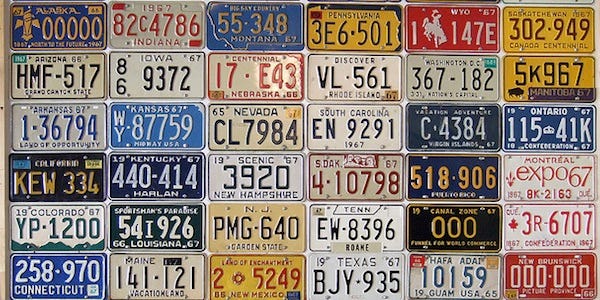
There are six different Creative Commons licenses, each with its own shortcode.
Attribution (CC BY)
This is the best license for content seekers and bloggers. It signifies that you can use, modify or build on a person's work, including for commercial purposes, as long as you give them credit. If you come across a great image with this license, its yours to do with what you want, in exchange for some simple recognition. All Creative Commons licenses require attribution, so keep that in mind.
Attribution-ShareAlike (CC BY-SA)
This is nearly as good as the above, with an asterix. Attribution-ShareAlike means that you can still use, modify or build on a person's work, including for commercial purposes, as long as you give them credit AND license your new creation under the same terms. In other words, in the spirit of openness, they want you to make your own image freely available under the Attribution-ShareAlike license. Tit for tat, and reasonable for most imagery that isn't being tagged with your logo or brand.
Attribution-NoDerivs (CC BY-ND)
Attribution-NoDerivs removes your right to modify or build on the image or photograph in question, which is a tough sell for many businesses. How many of us spend our days cropping photos to meet specific image guidelines, or layering text on top to promote blog posts or events? This license doesn't allow you to make these common changes, and for that reason many businesses will find no value in Attribution-NoDerivs content. If you don't mind keeping the images as is, all you have to do is credit the creator, as with Attribution.
Attribution-NonCommercial (CC BY-NC)
Are you marketing or selling something? Then move right along, because Attribution-NonCommercial is exactly how it sounds. This license removes your right to use the content for any sort of commercial purposes. This renders these images useless to most businesses. However, if you're an individual blogger, and you aren't selling anything, Attribution-NonCommercial content can be edited or modified at will.
Attribution-NonCommercial-ShareAlike (CC BY-NC-SA)
The same as above, except you have to license your modified work as Attribution-NonCommercial-ShareAlike as well. This license is still largely useless for brands, but is fine if you're not selling anything and don't mind people using your edited image.
Attribution-NonCommercial-NoDerivs (CC BY-NC-ND)
This is the most restrictive licence, and therefore the most unhelpful to businesses and bloggers. You can't use these images commercially and you can't modify these images in any way. This is a last resort when other Creative Commons licenses fail to provide you with usable imagery.
Public Domain (CC0)
Beyond Creative Commons licenses lies the public domain, the true Holy Grail for your image needs. People who dedicate their photos to the Public Domain, often called Creative Commons Zero or CC0, essentially give up all copyright over them. With no attribution, and no restrictions on commercial use or editing, you can literally use and abuse these images. This isn't a license, as much as it is the absence of one. For that reason, finding images in the Public Domain is invaluable for business bloggers.
Unfortunately, it is not always easy to find Public Domain images. Many of the images you will find will be old images whose licensing has expired. Either way, if you can find a source which provides a dependable source of Public Domain content, bookmark it.
How to find Creative Commons images
Finding Creative Commons images is actually quite simple. Finding good Creative Commons images is an entirely different story.
Understandably, not many professional photographers or artists license their works under Creative Commons licensing. This means that the majority of photos and images you'll find are taken by amateur or casual photographers and artists. Some of these are still very skilled and produce great work, but you often have to weed through hundreds of very unusable images.
The first step towards finding Creative Commons images is knowing how to narrow your search by license. There are many tools and sites which allow you to filter searches by license, including your basic Google Image search.
Google Advanced Image Search
If you go to Google and type in any search term, the top of the results page will include a variety of tabs, on of which is 'Images.' Clicking that tab, or simply going to https://images.google.com/, allows you to do a basic Google Image search, as most of you are probably aware. But did you know you could filter a Google image search to only show Creative Commons images?
Once you are within a Google image search, click on the "Search tools" followed by the "Usage rights" tab. Doing so will bring up the five options seen below.

If you're finding an image for a business, choose either 'Labeled for reuse" or "Labeled for reuse with modification," the latter of which is most valuable, as it will pull up Attribution and Attribution ShareAlike-licensed images.
Wikimedia Commons
Wikimedia Commons is a free, searchable image database from Wikipedia. The database contains over 25 million Creative Commons images, including over 700,000 of the much sought-after Creative Commons Zero images.
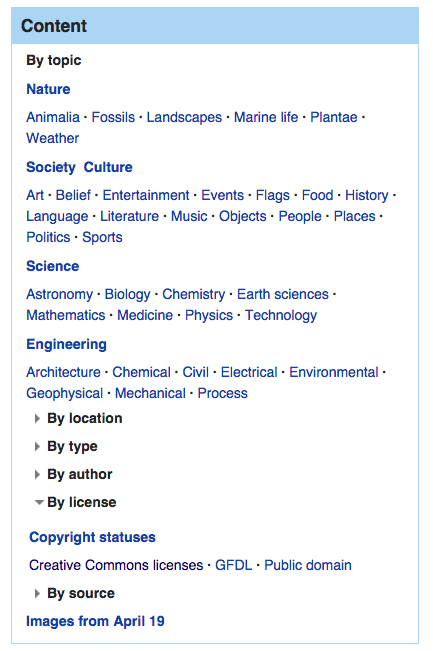
In the Commons you can search for a specific topic or filter images by license and other characteristics. Wikimedia Commons gets very granular in its license filtering, not only offering the six individual licenses but various versions of each of these licenses, which can be very confusing for the average person. For that reason, and based on the pure scale of the Commons, it might be worth it to search for your image topic first and check licensing after.
Flickr
Flickr is a common go-to for Creative Commons image searches, likely due to its simplicity.

Start within Flickr's Advanced Search page and find the Creative Commons section at the bottom. Check off the first box to only search through Creative Commons-licensed images. For business purposes, check off the second box for images that can be used commercially. The third and final box should be checked if you're planning on editing or modifying the image. Then, enter your search term at the top and away you go.
Creative Commons Search
Creative Commons actually has their own search tool which allows you to search multiple sources, including the above three, simultaneously. The options are nearly the exact same as with Flickr, so check off the available boxed and start your search.

Worth noting, Creative Commons is in the midst of replacing this search tool with another one, so keep an eye out for that announcement when it happens.
These databases are a great place to start your Creative Commons image search. At the same time, they often mean weeding through a slew of terrible photos, sometimes only to never actually find anything usable. Often the images are of a low quality, or they don't exactly fit your brand requirements.
In response to these issues, a number of sites have emerged to collect high-quality Creative Commons images. These sites are invaluable for content creators who really rely on high resolution images to provide visual appeal to their social or blog content. You can find many of these sites below, none of which require that you sign up for anything or provide your contact information. If you aren't opposed to creating accounts though, a quick Google search will offer many alternatives.
6 great sources of free Creative Commons images
Unsplash
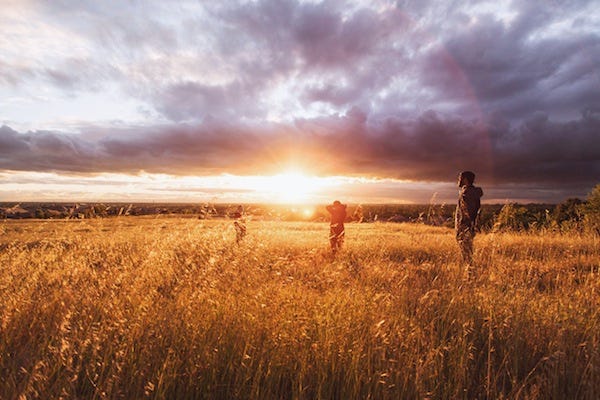
Unsplash is awesome if you don't need a very specific image. The site shares 10 new high-resolution photos every 10 days. All of these images fall under the Creative Commons Zero license, so you can do with them what you wish. You probably won't find many pictures of people in meeting rooms or cellphones, but you'll definitely find wonderful imagery of the outdoors and city scapes.
IM Free

Creative Commons images broken down into categories like Technology, Business, Food & Drinks and Fashion & Beauty. IM Free doesn't have a massive repertoire, but the images they have collected are generally well suited to business purposes. The categories are simple are you'll likely be able to find something workable regardless of your industry. Make sure you check the licensing of each image at the source (by clicking the creator's name) as they aren't stated directed on IM Free's website and can vary from image to image.
The Stocks

Much like Creative Commons Search, The Stocks pulls images from a number of Creative Commons aggregators. You're forced to use the navigation of the aggregate sites themselves, which means that you can't search for images on several of them, and at least one of them no longer works. Still, it's a great place to scroll through beautiful, usable photos.
Pixabay

Pixabay collects Public Domain images, so you don't have to worry about licensing at all. Be careful not to click the sponsored images at the top of the results page though, as those are essentially an ad for Shutterstock and will cost you money to use.
Death to the Stock Photo
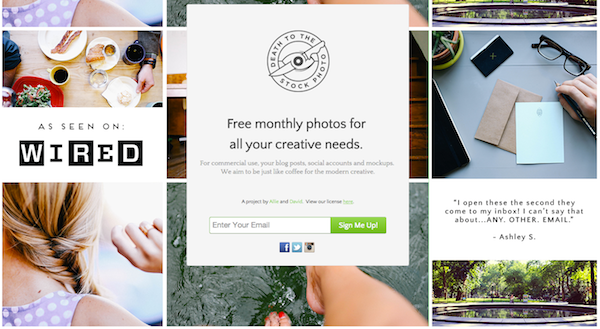
A bit of a weird system, Death to the Stock Photo actually emails you high-resolution Creative Commons images once a month. The images were taken by the creators of the website, two photographers, and can be used for commercial purposes. While Death to the Stock photo won't help you out on a specific search for a photo, the emails you get are filled with imagery that might come in handy somewhere down the line.
Picjumbo

Picjumbo is another site with a vast collection of Creative Commons photos that can all be used commercially. The site has both search and categories to help you navigate through the food of imagery. Here too, you can enter your email and have high-quality images sent to your inbox.
Using Creative Commons images
Here's a rule of thumb when it comes to using Creative Commons images: don't, when you don't have to.
The over 220 million Creative Commons images out in the wild are hugely valuable, especially for individuals and businesses with very few resources. However, whenever possible you should strive to use or create your own images and photos. Great photography is more accessible than ever thanks to high-quality cameras, camera phones and simple editing software. YouTube tutorials can walk you through shooting photography, photoshop and many other valuable resources which will help you in your daily image search. If you can provide your own good images, there's really no reason restrict yourself by using Creative Commons licensed images. But even we use them, and most of you will too. The emphasis should be on a balance of original imagery and Creative Commons imagery.
If you really don't have the time or resources to provide your own visuals, make sure that you're using Creative Commons images the right way. Here's what that means:
- Always following the license requirements: Don't try and cheat the system. Even getting caught once can mean a big blow to your brand and reputation. Follow attribution best practices to avoid any questions down the line.
- Knowing the license isn't enough: Make sure to check if the creator has set aside specific requirements for use of their image. Some photographers ask that you credit them with specific language, even under the simple Attribution license. Make sure to keep an eye out for these types of image-specific guidelines.
- Include the license in your image caption: This was recommended by several authorities on Creative Commons. Including the license make it clear to creators and viewers alike that the image is being used under specific terms. It also makes it clear to anyone who may want to lift the image from your content.
Find me on Twitter @evanlepage
How To Attribute Creative Commons On Blog Post
Source: https://medium.com/@evanlepage/a-guide-to-creative-commons-images-for-blogs-91644f5933be
Posted by: bushthisiumok.blogspot.com

0 Response to "How To Attribute Creative Commons On Blog Post"
Post a Comment